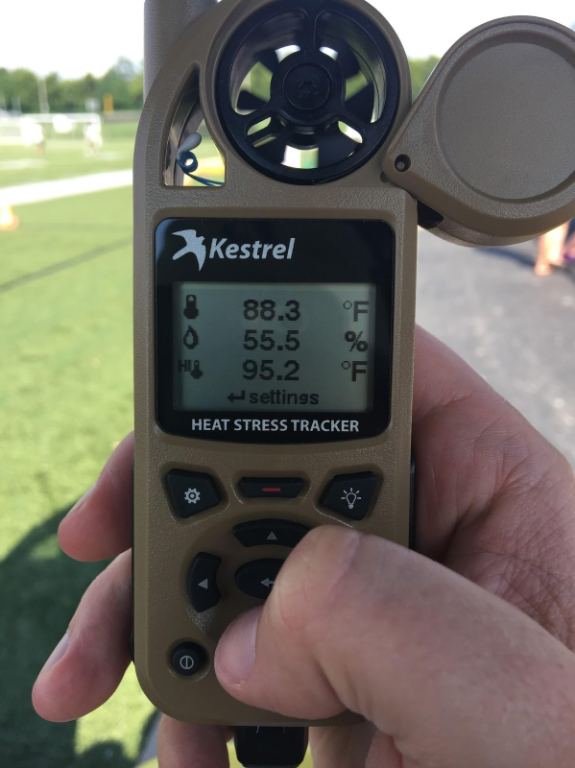Taking steps to beat the summer heat
Published 10:28 pm Wednesday, April 26, 2017

- Photo submitted
By JEREMY JOHNSON
Boyle County Athletic Trainer
In this article, I am going to discuss some of the ways that Athletic Trainers (ATS) work to prevent heat illness. Playing sports in extreme heat can lead to injury. ATs in Kentucky combat this by acclimatization and monitoring the heat index.
The Korey Stringer Institute is the country’s leading researcher on heat illness. They define heat acclimatization as a complex series of body changes or adaptations that occur in response to heat stress in a natural environment over the course of seven to 14 days. Some of these changes include reductions in heart rate, perceived exertion and body temperature. There are also increases in sweat rate, heart function or blood distribution, and the athlete’s overall ability to perform in the heat.
At Boyle County High School, our athletes are acclimated by practicing in no equipment for the first two weeks of football practice. Practices in the beginning are shorter to allow the body to become accustomed to the weather. Gone are the days of the “Junction Boys” where water is withheld and athletes practice in the heat of the day. Full contact practices also do not start until Aug. 1.
The heat index is calculated by using a chart that combines the temperature and the relative humidity taken on site. I use a Kestrel 5400 digital heat stress monitor to check the heat index every 30 minutes when the measurements are above 95. If the heat index is 95-99, then a break is mandatory for at least 10 minutes in duration, every 30 minutes. If the heat index is above 99, no activity is permitted in equipment intensive sports like lacrosse and football. For non-equipment intensive sports like soccer, a break is mandatory for at least 10 minutes in duration, every 30 minutes when the heat index is 99-104. Above 104 all sports stop activity.
More information about our guidelines can be found at http://khsaa.org/
Below are tips that I give our coaches for practicing in the heat:
– Schedule practices in the coolest parts of the day
– Pace activity
– Rotate athletes with substitutions
– Keep a special eye on athletes that come into practice in poor physical condition
– Give multiple team water breaks (water is always available but athletes are reluctant to get water on their own during practice)
– Encourage athletes to hydrate throughout the day
Here are some tips that I use to prepare our athletes for the summer heat:
– Get out during in the heat before summer practices begin in July. (Mow the yard; go for a run, etc.)
– Eat at least 4 meals throughout the day
– Drink plenty of water throughout the day (to the point that your urine should be a clear to light yellow color)
– Avoid drinks that are high in sugar or caffeine
– Begin summer practices in good physical condition. If you come in after the dead period and haven’t exercised in three weeks, you are already behind.
For more information on heat acclimatization, heat illness, and prevention visit www.ksi.uconn.edu.






